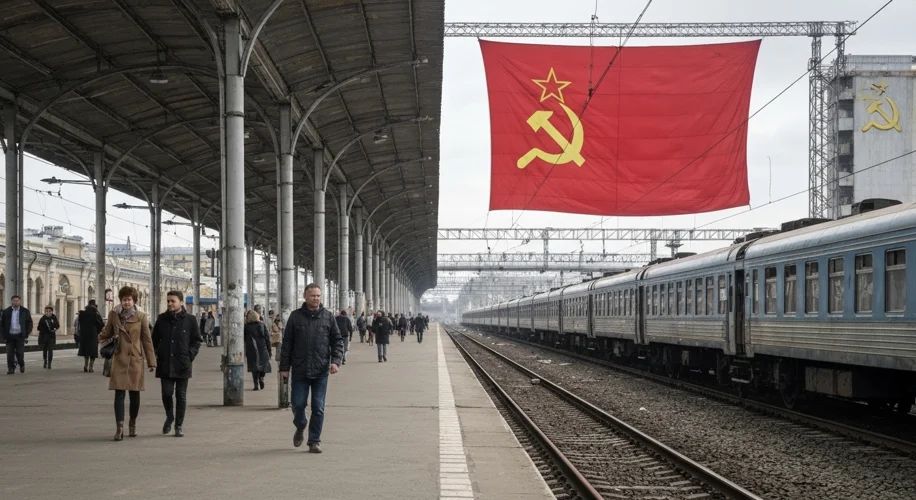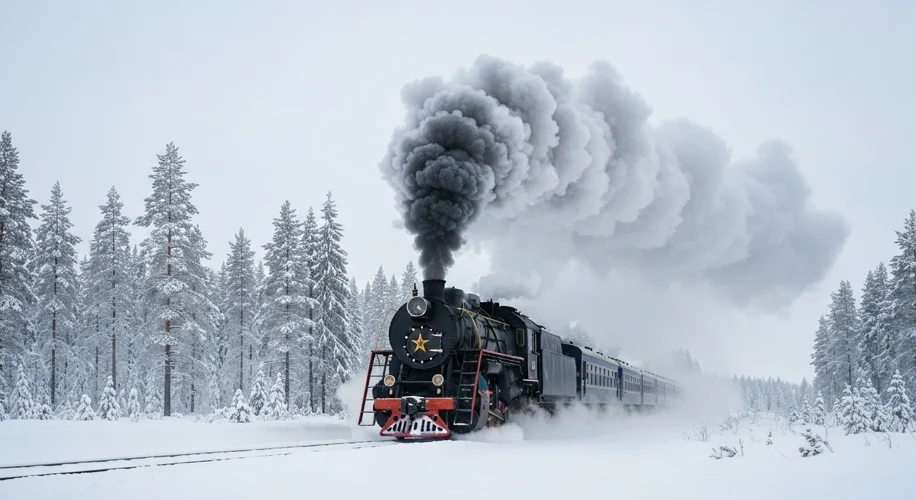Imagine a vast expanse, stretching from the Baltic Sea to the Pacific Ocean, a land bound together by ribbons of steel. For Imperial Russia, and later the Soviet Union, railways were more than just transportation; they were the arteries of empire, the conduits of industry, and the very sinews of national power. Yet, this colossal network, so vital to Russia’s very existence, has been plagued by a recurring specter of collapse, a history as turbulent as the landscapes it traverses.
The story of Russian railways is inextricably linked to its immense geography and its often-unforgiving climate. From the mid-19th century onwards, as Tsar Alexander II recognized the strategic and economic imperative of connecting his sprawling empire, the monumental task of railway construction began. The Trans-Siberian Railway, a marvel of engineering for its time, was a prime example – a lifeline to the remote East, crucial for administration, defense, and resource exploitation. But even in its inception, the challenges were immense: permafrost, vast distances, and limited resources tested the limits of human endeavor.

One of the most dramatic chapters in this saga unfolded during World War I and the subsequent Russian Revolution. The strain of wartime logistics on an already overburdened system proved catastrophic. Armies needed to be moved, supplies delivered, and the populace fed, all while the rails themselves were often sabotaged or fell into disrepair due to lack of maintenance and skilled personnel. The February Revolution of 1917, which toppled the Tsarist autocracy, was in no small part fueled by the breakdown of transportation, leading to food shortages in major cities. Petrograd, the capital, choked on its own hunger, a direct consequence of an immobilized railway system.
The Bolsheviks, upon seizing power, understood the critical importance of the railways for consolidating their control. They rallied the railway workers, the ‘bezprizorniki’ (unaccompanied children) of the system, to repair and operate the lines. Yet, the Civil War that followed meant that the railways became both a tool of war and a constant target. Red Army trains, moving troops and supplies with remarkable speed, were crucial to their victory. But the chaos, the destruction, and the sheer inefficiency of the early Soviet period meant that the system remained fragile. Passenger services were abysmal, freight moved erratically, and breakdowns were a daily occurrence.
The Soviet era saw massive investment in the railway network, expanding it to unprecedented lengths and electrifying vast sections. However, the centrally planned economy, with its emphasis on heavy industry and often unrealistic production targets, sowed the seeds for future collapses. The sheer scale of the network, coupled with a persistent neglect of maintenance, a lack of investment in modern technology, and a culture that prioritized quantity over quality, created a ticking time bomb.

Throughout the Soviet period, major disruptions were not uncommon. Harsh winters would frequently paralyze entire regions, with trains stuck in snowdrifts for weeks. In the 1970s and 80s, reports emerged of severe bottlenecks, with goods piling up at depots because trains couldn’t move them. The infamous Sayan-Bayan bridge collapse in 1977, which killed 11 people, was a stark reminder of the physical decay and potential for disaster within the aging infrastructure.

The collapse of the Soviet Union in 1991 further exacerbated these issues. The seamless network that had once operated across 15 republics was suddenly fragmented. Borders, customs, and differing economic policies created immediate logistical nightmares. Investment dried up, skilled workers emigrated, and the privatization of some sections led to further disarray. While Russia has made efforts to modernize its railway system, particularly with high-speed lines in more affluent regions, the vast legacy network continues to grapple with the ghosts of its past – deferred maintenance, climatic challenges, and the sheer weight of its own history.
The history of Russian railway collapses is a powerful metaphor for the broader challenges faced by the nation: the struggle to manage immense scale, the enduring impact of climate, the legacy of centralized planning, and the constant battle between ambition and execution. These metallic arteries, designed to unite a nation, have too often become symbols of its fragmentation and its enduring vulnerabilities.

